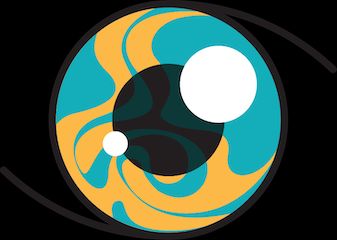Which medications and surgeries doctors use to treat stroke depend on whether it’s an ischemic or hemorrhagic stroke. Timely treatment is of utmost importance.
A stroke occurs when the blood flow to a specific part of your brain is cut off. When this happens, the cells don’t get oxygen and begin to die, causing numerous symptoms. How a stroke affects you depends on the location in your brain where the stroke occurs.
Evaluation and treatment for a stroke should begin as soon as possible. The quicker emergency treatment begins, the greater the chance of preventing lasting damage. Treatment depends on whether you’re having an ischemic or hemorrhagic stroke.
Act FAST to treat stroke
Successful outcomes after a stroke depend on how quickly doctors can begin treatment. The acronym
- F: Check for facial droop.
- A: Hold arms out. Does one drop downward?
- S: Is speech irregular, delayed, or absent?
- T: It’s time to call 911 or your local emergency services if any of these symptoms are present.
Ischemic strokes are the most common kind of stroke. They occur when a blood clot blocks blood flow to your brain.
Medications
Medication treatment for this type of stroke must start
The primary treatment for ischemic stroke is tissue plasminogen activator (tPA), a powerful thrombolytic that breaks up blood clots blocking or disrupting blood flow to your brain. A healthcare professional will administer a tPA through a vein in your arm.
You may receive other medications, including:
- blood thinners like clopidogrel (Plavix) or warfarin (Coumadin) if you can’t receive tPA
- aspirin within
24–48 hours after a stroke to reduce the risk of new blood clots - statins to reduce the risk of future stroke
Thrombectomy
If drugs don’t adequately break up the blood clot and if the stroke is acute or localized to one area, your doctor may use a catheter to access the clot and remove it manually. This is called a thrombectomy.
They’ll thread the catheter through your blood vessels toward the area where the clot is lodged. Your doctor can remove the clot either by a corkscrew-like device attached to the catheter or by using clot-busting agents administered through the catheter directly into the clot.
Doctors can perform mechanical clot removals up to
Decompressive craniectomy
A large stroke can lead to severe swelling in the brain. You may need surgery if drugs don’t relieve the swelling.
Decompressive craniectomy aims to relieve the buildup of pressure inside your skull before it becomes dangerous. For the procedure, a surgeon will open up a flap of bone in your skull in the area of the swelling. Once the pressure is relieved, the surgeon will return the flap.
Hemorrhagic stroke occurs when a brain aneurysm bursts or a weakened blood vessel leaks. This causes blood to leak into your brain, creating swelling and pressure.
Medications
Unlike ischemic strokes, treatment for hemorrhagic strokes doesn’t involve blood thinners. This is because thinning your blood would cause the bleeding in your brain to become worse. If you’re already taking blood thinners, a doctor may administer drugs to counteract them.
A doctor may recommend other medications to help treat hemorrhagic stroke or its complications, including:
- antihypertensives to lower your blood pressure
- vitamin K or medications to help stop bleeding in the brain
- antiepileptics if the stroke leads to seizures
Surgery
Depending on the damage to the vessel in your brain, you may need surgery after a hemorrhagic stroke. For surgery to be successful, the affected blood vessel must be in a location the surgeon can reach.
Options for medical procedures after a hemorrhagic stroke
- Endovascular repair: Also known as coiling, this minimally invasive procedure involves threading a thin wire and catheter through your blood vessels into the aneurysm. The surgeon then releases a coil of soft platinum wire into the area, forming a net to prevent further bleeding.
- Aneurysm clipping: Clipping the aneurysm involves permanently installing a clamp to prevent it from bleeding further or bursting. As clipping is typically more invasive than coiling, doctors recommend it only when coiling isn’t an option.
- Arteriovenous malformation (AVM) surgery: An AVM is a tangle of blood vessels that can burst. AVM surgery can remove or shrink this tangle, restoring proper blood flow.
- Decompressive craniectomy: Also used for ischemic strokes, this involves temporarily removing part of the skull to relieve pressure.
- Stereotactic radiosurgery: This noninvasive technique uses radiation therapy to repair blood vessels.
While in hospital, you may require other treatments to help you in the early stages of recovery. These may include:
- a feeding tube, especially if you have dysphagia (difficulty swallowing)
- IV fluids, to prevent dehydration
- supplemental oxygen, if you have hypoxemia (low blood oxygen)
- nutritional supplements
- compression stockings, to prevent blood clots
After emergency procedures, your doctor will evaluate the health of your arteries and determine what needs to be done to prevent another stroke.
Lifestyle changes
Post-stroke preventive measures mainly focus on improving cardiovascular health. This might mean lowering your blood pressure and managing your blood sugar and cholesterol levels.
Recommended lifestyle changes may
- getting regular exercise
- eating a heart-healthy diet
- taking medications such as aspirin
- quitting smoking if you do
Carotid endarterectomy
If you’ve had an ischemic stroke due to a blocked carotid artery, a doctor might recommend a carotid endarterectomy.
The carotid arteries are the major blood vessels in the neck that supply blood to the brain. For this procedure, a surgeon will remove plaques and blockages from these arteries to improve blood flow and decrease the risk of future stroke.
This surgery carries the risks associated with any surgery. There’s also the risk that it may trigger another stroke if plaques or blood clots are released during the surgery. Surgeons use protective measures to help reduce these risks.
Rehabilitation following a stroke depends on the extent of the damage and what part of your brain was affected.
For instance, if the stroke occurred in the right side of your brain, you may need physical rehabilitation that focuses on walking up and down stairs, getting dressed, or bringing food to your mouth. The right side of the brain controls visual-spatial functions.
You may need rehabilitation or corrective measures to also help with:
- coordination
- balance
- vision
- bowel or bladder control
- speech
- swallowing
- fine motor activities, such as writing or drawing
What is the treatment for a TIA?
A transient ischemic attack (TIA), or ministroke, results from a temporary blockage of blood flow to your brain. Having a TIA
How long does a stroke last?
There’s no set time for how long stroke symptoms typically last. The duration of symptoms can depend on the type of stroke and the treatment received.
For example, in a 2021 study of people who received endovascular surgery after an ischemic stroke, symptoms lasted an average of
But stroke symptoms can last days to weeks or months. In some cases, symptoms and complications may never go away.
How long does it take to recover from a stroke?
Stroke recovery can take weeks to years. While some people make a full recovery, many experience permanent impairments.
A stroke can be a serious and life threatening event. However, the sooner you get evaluated and treated, the quicker you can prevent long-term damage to your brain and body.
Different kinds of strokes require different treatments, rehabilitation procedures, and preventive measures. If you’re experiencing the symptoms of a stroke, seek emergency medical attention immediately.









